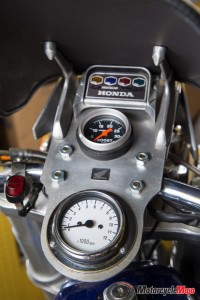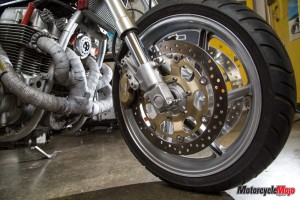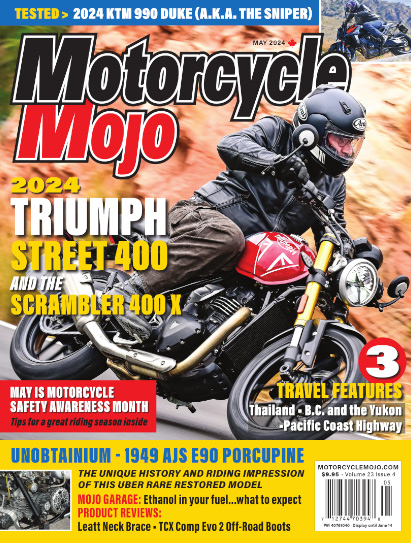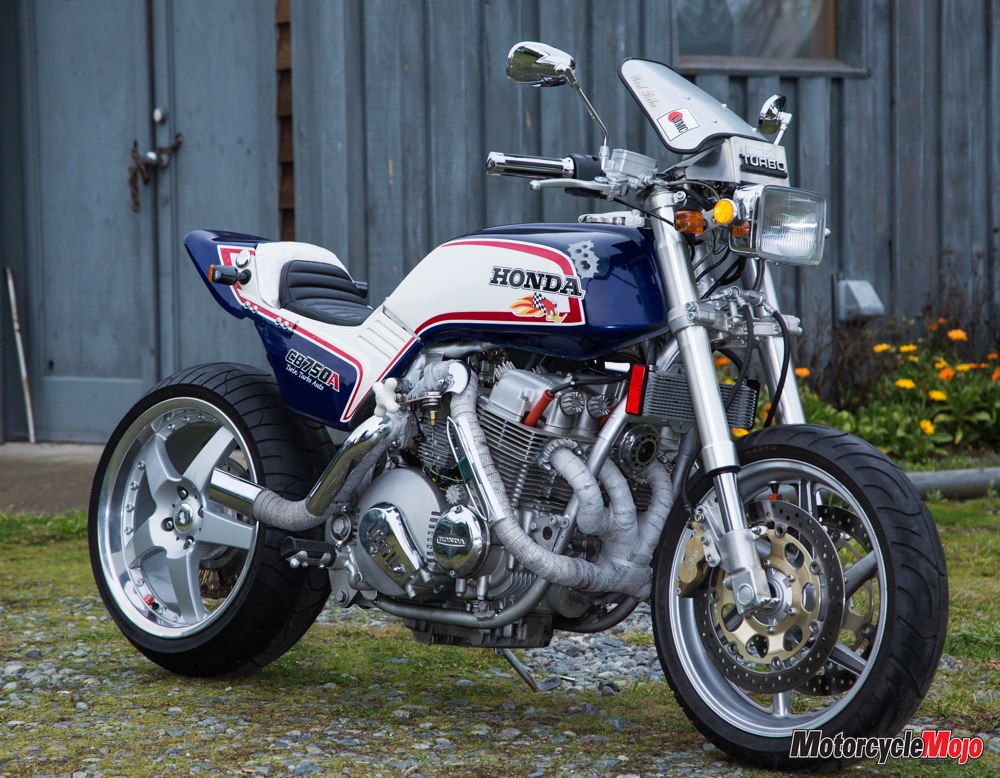It’s funny what some people will do when a challenge is put in front of them. Case in point: Fred Belanger was prompted by a friend to build a bike for a local biker build-off competition back in 1982, and that was all that he needed to get started.
Sometimes the best things begin without a plan. Not really knowing what to build, he took stock of parts he had lying around. He found a turbo from an XJ650 Yamaha neatly tucked under his bench, and upon buying a job lot of parts from a hill-climb guy, he ended up with a set of Carrillo connecting rods for a Honda CB750 single-cam engine. Nanaimo Salvage had an identical XJ650 turbo and CB750 cc engine with auto transmission kicking around, which they donated to the cause. Now things were starting to take shape.
The build he had in mind may sound daunting, but Belanger has been around bikes all his life. He’s made a living working in motorcycle dealerships and has taught tech classes for Honda Canada in Richmond, B.C. He successfully campaigned a winning hill-climb team with his son for 10 years, and owned West Bike Motorcycle Salvage Yard on Vancouver Island for 25 years. To say Belanger has experience tinkering with motorcycles would be an understatement.
Gathering up these few parts, Belanger began to formulate a vision of what this build would be. Since he is a bit of a speed junkie, it was obvious that the engine would be the highlight of the build. The single-cam head has been totally modified to accept the plenum chamber and twin turbos. This took a lot of welding, Belanger says, and he could only weld a little at time to avoid loosening up the valve guides or warping the head.
 After outfitting the head with stainless steel valves, high-performance valve springs and a modified cam, he moved on to install 8:1 high-compression MTC pistons. With that much compression, heavy-duty barrel studs and copper gaskets helped to keep the head attached tightly to the block.
After outfitting the head with stainless steel valves, high-performance valve springs and a modified cam, he moved on to install 8:1 high-compression MTC pistons. With that much compression, heavy-duty barrel studs and copper gaskets helped to keep the head attached tightly to the block.
Once the high-performance intake was looked after, it was time to sort out the exhaust. Belanger built the intricate exhaust by hand, and it took a lot of configuring to make it work properly. Cylinders 1 and 4 are connected, and 2 and 3 are connected; each pair operates a turbo.
The ignition is a Dyna S, and the mechanical advance was changed to retard the timing because of the extreme charge that the turbos deliver. Luckily, Belanger did a stint at a turbo company, so he understands the old-school way of getting around the problem – today it would be done with computers.
Spinning wicked fast at 200,000 rpm, it’s important for the turbos to get the proper oil feed, so a micro-adjustable oil pressure switch was installed to assure each one receives a sustained 1.5 psi oil pressure.
Once the engine was looked after, he moved onto the frame and ancillary bits. The frame’s engine mounts are stock, but that is where it ends. Belanger built the rest of the frame to accommodate the twin turbos and the single-sided swingarm. The rest of the parts that complete the bike are a hodgepodge taken from a staggering number of makes and models.
Why an auto and not a manual five-speed? Belanger states, “Essentially, it was in an effort to avoid an over-boost situation that might occur when one really ‘gets on it.’ Trying to get into it with a manual 5-speed, one could quickly wind up past redline, scattering engine parts, while the auto can just be put in drive, and the tranny can do the shifting.”
 Indicators and gauges on the bike are minimal. In addition to turn-signal and high-beam indicators, a green light indicates the bike is in first gear, and a red light shows second. The “hot knob” was a joke aimed at some friends who would put items on their bikes for decoration only, although the hot knob actually works – it adjusts the turbo vacuum booster. There’s an oil-pressure gauge and a tach. Belanger apparently uses the boost gauge as a speedo – “If it’s boosting, I’m speeding,” he says. It’s hard to argue with that.
Indicators and gauges on the bike are minimal. In addition to turn-signal and high-beam indicators, a green light indicates the bike is in first gear, and a red light shows second. The “hot knob” was a joke aimed at some friends who would put items on their bikes for decoration only, although the hot knob actually works – it adjusts the turbo vacuum booster. There’s an oil-pressure gauge and a tach. Belanger apparently uses the boost gauge as a speedo – “If it’s boosting, I’m speeding,” he says. It’s hard to argue with that.
After 30 years, the twin turbo CB750 Auto still turns heads and is still a daily rider. Even though he plans to retire soon, Belanger still lives life in the fast lane and says he rides his Honda “Dream” in the first half of summer as a grocery getter, until the roads are clean, then he brings out his big gun, a hopped-up RC51, with which he has no problem taking on anyone who feels it can be beat.
| Owner: | Fred Belanger |
| Make: | Honda |
| Model: | CB750 Auto |
| Builder: | Fred Belanger |
| Time: | 8–12 months |
| Engine | |
| Year: | 1976 |
| Builder: | Honda/Belanger |
| Cases: | Stock |
| Heads: | Honda/Belanger |
| Connecting Rods: | Carrillo |
| Carburetor: | Keihin side draft (Kawasaki Z1R turbo) |
| Ignition: | Dyna S |
| Exhaust: | Belanger |
| Turbos: | Yamaha XJ650 |
| Transmission | |
| Year: | 1976 |
| Builder: | Honda |
| Type: | 2-speed auto |
| Frame | |
| Year: | 1976 |
| Builder: | Belanger |
| Modifications: | Single-sided Honda VFR750FI swingarm |
| Front End | |
| Builder: | Suzuki |
| Type: | Inverted GSX-R |
| Wheels | |
| Front: | |
| Manufacturer/Model: | Honda RC51 |
| Tire make and size: | Maxxis Supermaxx 120/65ZR-17 |
| Rear: | |
| Manufacturer/Model: | Honda CRX |
| Tire make and size: | Bridgestone Battlax 200/50ZR-17 |
| Essentials | |
| Brakes: | Brembo – Ducati Monster |
| Windscreen: | Suzuki GS750 Katana |
| Brake and clutch levers: | Kawasaki Ninja |
| Switchgear: | Honda V65 |
| Headlight: | Honda V65 |

































